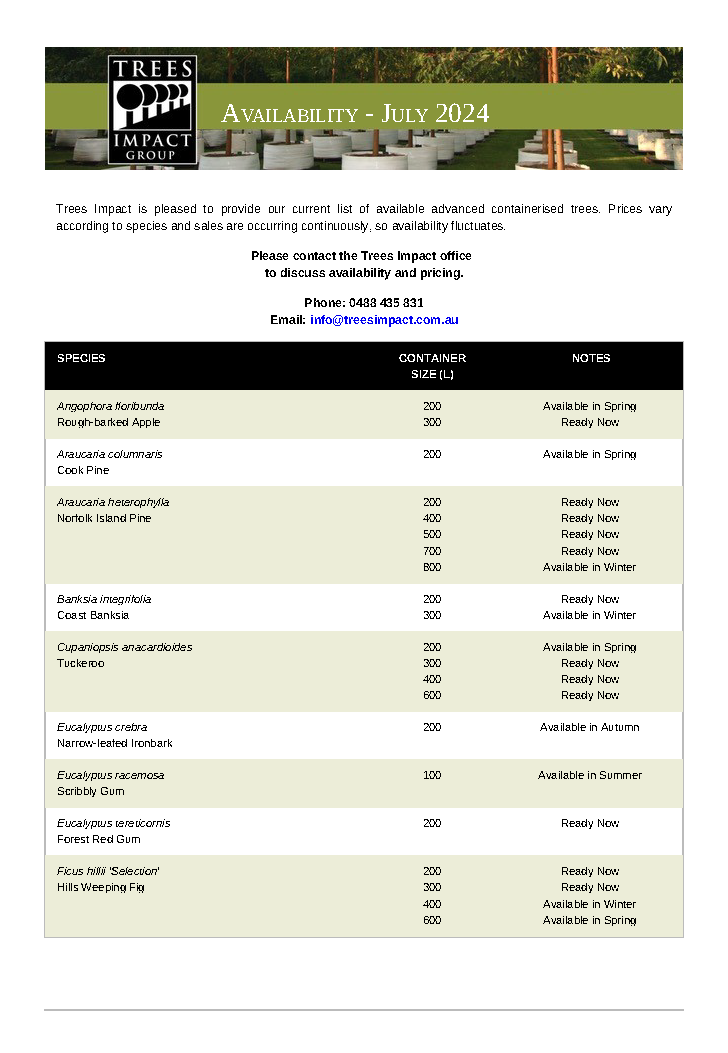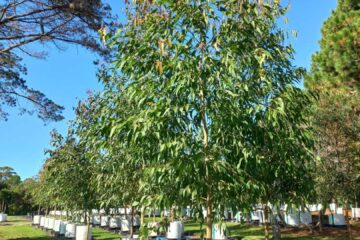THE BENEFITS OF PLANTING FEWER TREES – less can be more.
It’s not about how many trees you plant, it’s about how many trees succeed and go on to do their job. Financially, aesthetically and environmentally, there can often be benefits in planting fewer trees.
In recent decades the importance given to our urban trees has increased dramatically. Trees now feature prominently in planning policies and are important politically. This has been a great step forward.
However, we continue to focus on ‘inputs’ (particularly the number of trees planted) rather than ‘outcomes’ (what was actually achieved).
Striving to plant the greatest number of trees possible doesn’t always provide the best outcome.
Consider the following three examples.
Example #1:
Only plant as many trees as you can look after.
Early aftercare of newly planted trees is critical for their success. If you only have the resources to maintain 100 trees properly, don’t plant 150. If you plant 150 trees, none will be properly maintained, all 150 will suffer from inadequate aftercare, and either underperform or fail. This is a common event. Instead, enjoy the benefits of planting fewer trees. If you only plant the 100 trees you can confidently look after properly, the initial outlay will be less, and you will have more funds and resources to invest in the care of the trees now planted, thereby ensuring a much better job overall. To achieve 100 successful trees is a far better outcome than 150 unsatisfactory or completely unsuccessful trees.
Example #2
Plant fewer trees, but larger growing species, when space is limited.
In our new developments, space is generally at a premium, so the space available for trees on two sides of the road will often be limited. Matching species to these small spaces will mean allocating small-growing trees. However, one medium-growing tree will provide around four times the amount of shade and roughly eight times the environmental benefits of a small-growing tree. So, if you re-allocate all the available space to only one side of the road, thereby creating enough room for medium-growing species, and then only plant on that side of the road, you will have provided twice the amount of shade and four times the environmental benefits – while using only half the number of trees originally proposed.
Example #3:
Leave trees out when funding is reduced.
Unfortunately, the trees are almost always left until the end of the project. Therefore, if there are budget overruns along the way, the money left to buy the trees is reduced. The kneejerk reaction is to plant smaller, cheaper trees. However, by switching to smaller tree stock you will:
- Diminish the short and medium-term outcomes. These smaller trees won’t look as good or do the job as well as the ones initially specified.
- Compromise the long-term outcome. Smaller trees will only be fit for purpose if the necessary management (watering, formative pruning, pest control, etc) is carried out, and carried out well, in the years ahead post planting.
- Increase ongoing costs. The extra follow-up pruning, protection and likely replacements these smaller trees will need over some years, and the associated ongoing additional costs, will erode any apparent savings made by planting smaller stock.
- Delay the successful outcome. Even if all goes well and these smaller trees succeed and become successful urban trees, this positive outcome will only be realised years later.
Added to this is the fact that the price of the trees themselves represents only a tiny percentage of the total cost of any significant urban landscaping project (typically between 1% and 5%). Therefore, even slashing the size/price of the trees planted will only yield a very small, probably short-term, saving.
If funds have become short when it becomes time to plant, don’t go smaller; leave some trees out. Leaving trees out saves the total cost of those trees, the civil costs involved, the delivery costs, and planting and establishment expenses. These savings are real and permanent and they add up quickly. And, if you manage to secure extra funding later, you will have the option of adding the missing trees back in.

